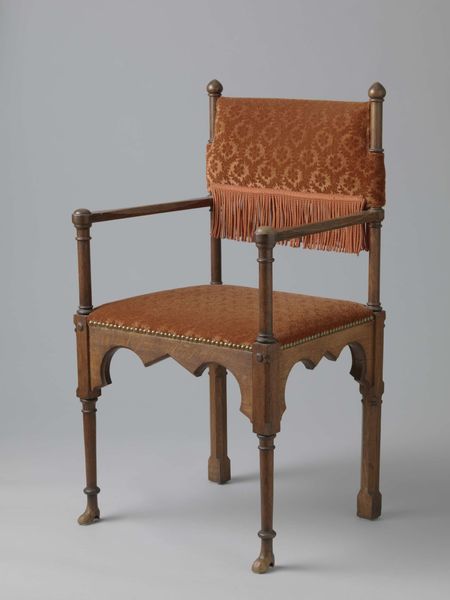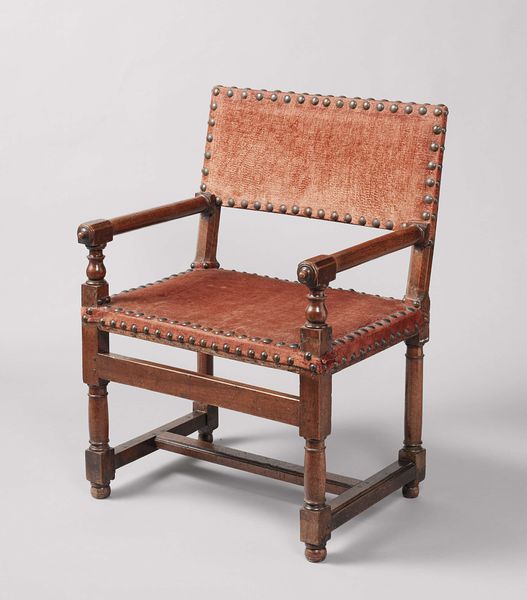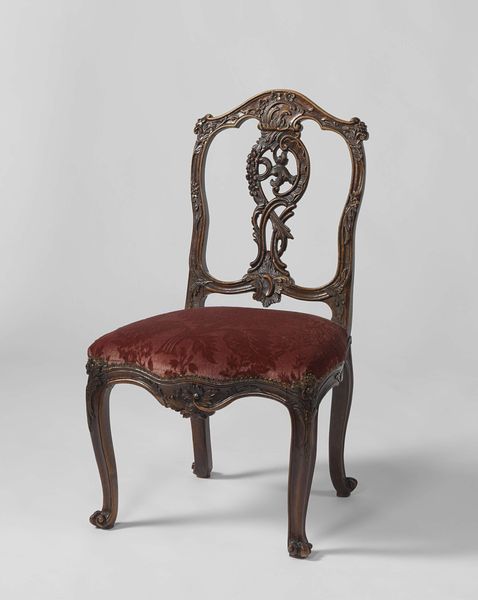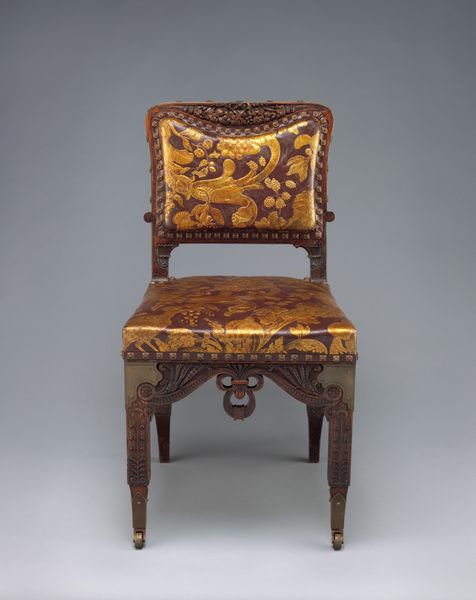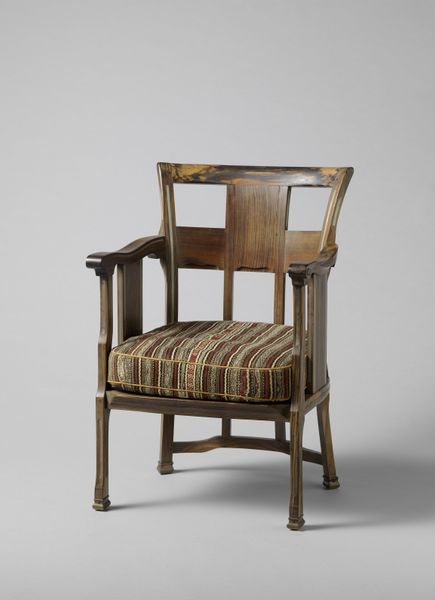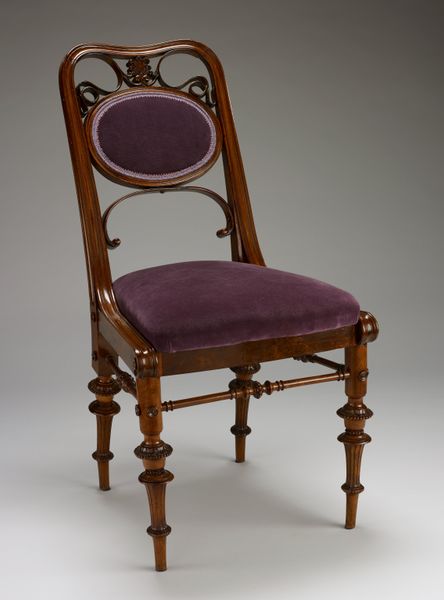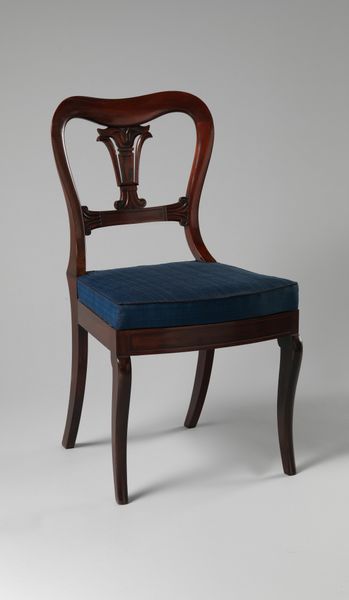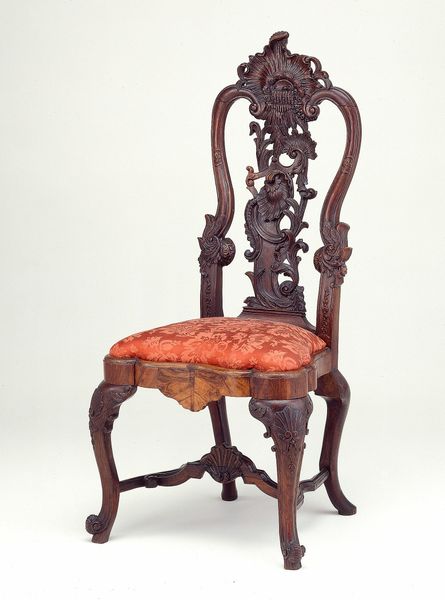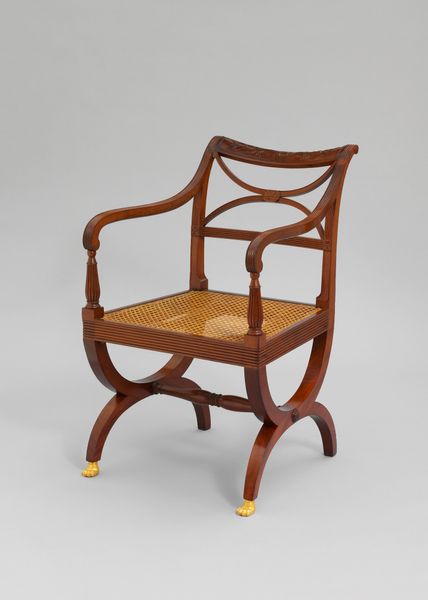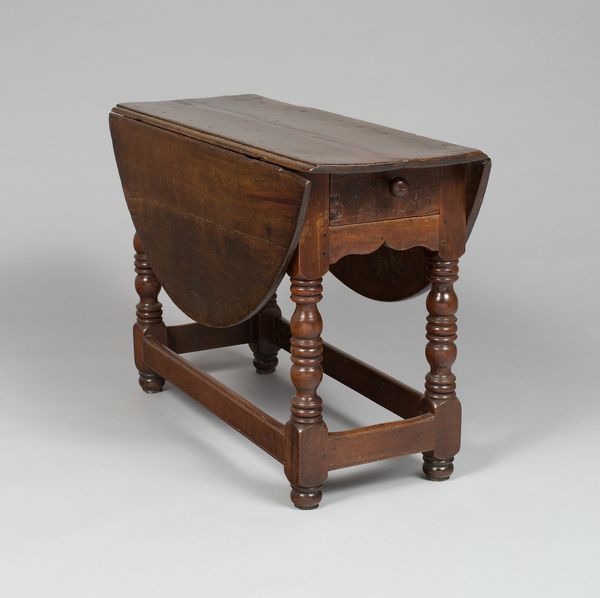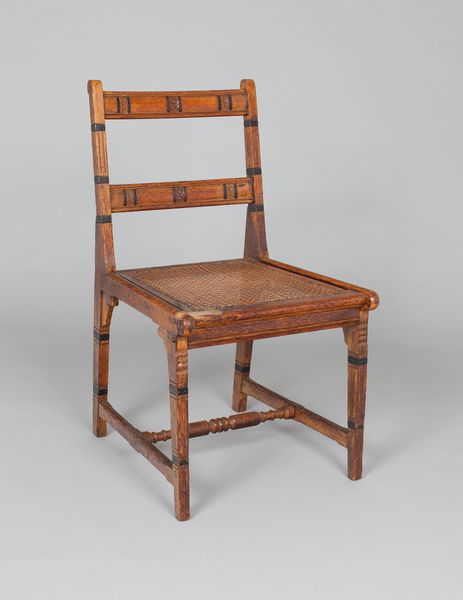
Stoel met lage arm- en zijleuningen en met armleggers die eindigen in een groteskenkop 1880
0:00
0:00
sculpture, wood
#
arts-&-crafts-movement
#
furniture
#
sculpture
#
wood
Dimensions: height 80 cm, width 50 cm, depth 45 cm
Copyright: Rijks Museum: Open Domain
Curator: This arresting chair, crafted around 1880, is titled "Stoel met lage arm- en zijleuningen en met armleggers die eindigen in een groteskenkop." What is your immediate reaction to it? Editor: Foreboding. The carved grotesque heads at the armrests, combined with that velvety brown upholstery, gives it a very severe, almost judgmental aura. I can imagine someone being summoned to sit on that chair for a serious reprimand. Curator: A heavy seat, indeed. It’s attributed to Pierre Joseph Hubert Cuypers and sits firmly within the Arts and Crafts movement, showcasing the skill of the artisan in carving the wood. What can you tell us about that relationship between the artist and the furniture creation? Editor: Cuypers' association with the Arts and Crafts movement places him amidst a broader concern for labor. Who was involved in crafting this chair? What were their working conditions, and did the final product reflect the dominant aesthetic or offer any form of cultural resistance? The choice of grotesque heads seems intentional – are they guarding against something? Is this seat designed to make the sitter powerful, or perhaps just deeply uncomfortable? Curator: That brown velvet seems rather luxurious doesn’t it? The craftsmanship is evident, from the twisted detailing on the supports to the carefully placed tacks securing the seat. The choice of materials and their application surely reflect on production methods of the time, emphasizing value of craftsmanship. Editor: Absolutely, yet how complicit are the aesthetics of the Arts and Crafts movement in upholding social hierarchies? Was this chair intended for the elite, and does its material splendor subtly endorse particular structures of privilege and access? In thinking about its role, where and for whom do we believe that it sat, and what statements of class or social power were embedded in that setting? Curator: A provocative stance. Considering the chair’s aesthetic merits, however, one must admit that the interplay of the carved wood with the fabric creates a pleasing visual, don't you think? The grotesques could be read as protective figures as well. Editor: I find their glower more unsettling than reassuring. Ultimately, analyzing the visual aspects demands an interrogation of purpose and a sensitivity to those often left outside the narrative. It encourages critical evaluation that sees beyond mere aesthetic pleasure. Curator: That is the crux of the discussion, and where different perspectives enhance the experience of an artwork, no matter the approach. Editor: Indeed.
Comments
No comments
Be the first to comment and join the conversation on the ultimate creative platform.
